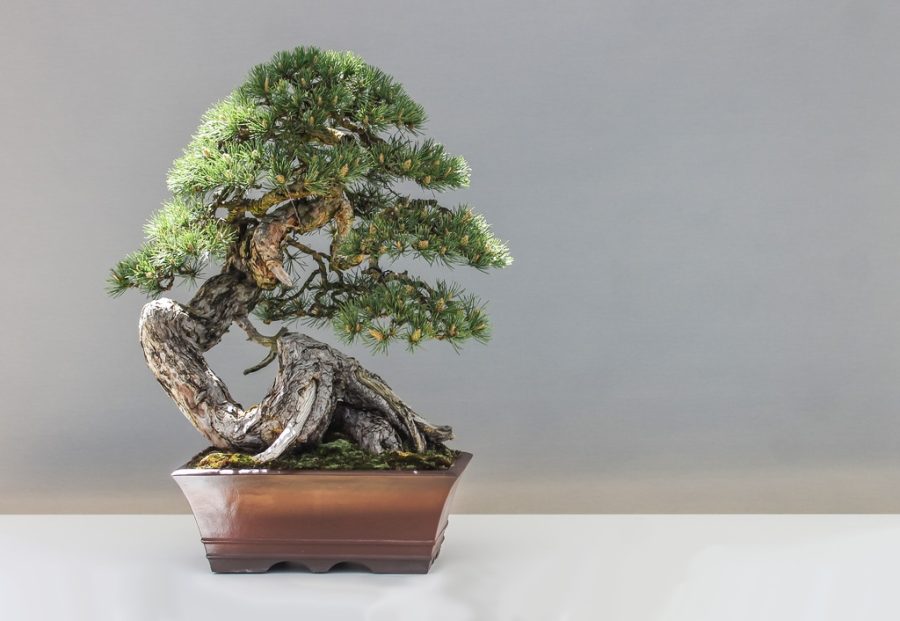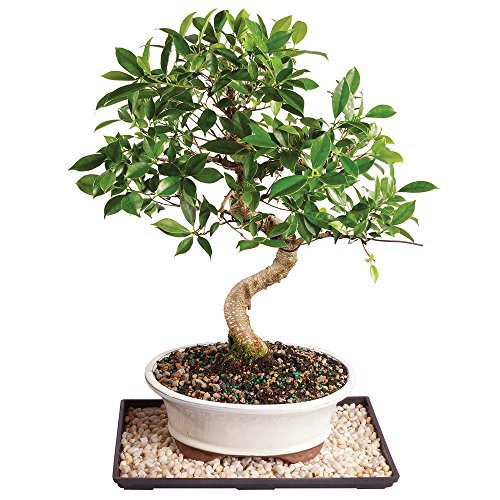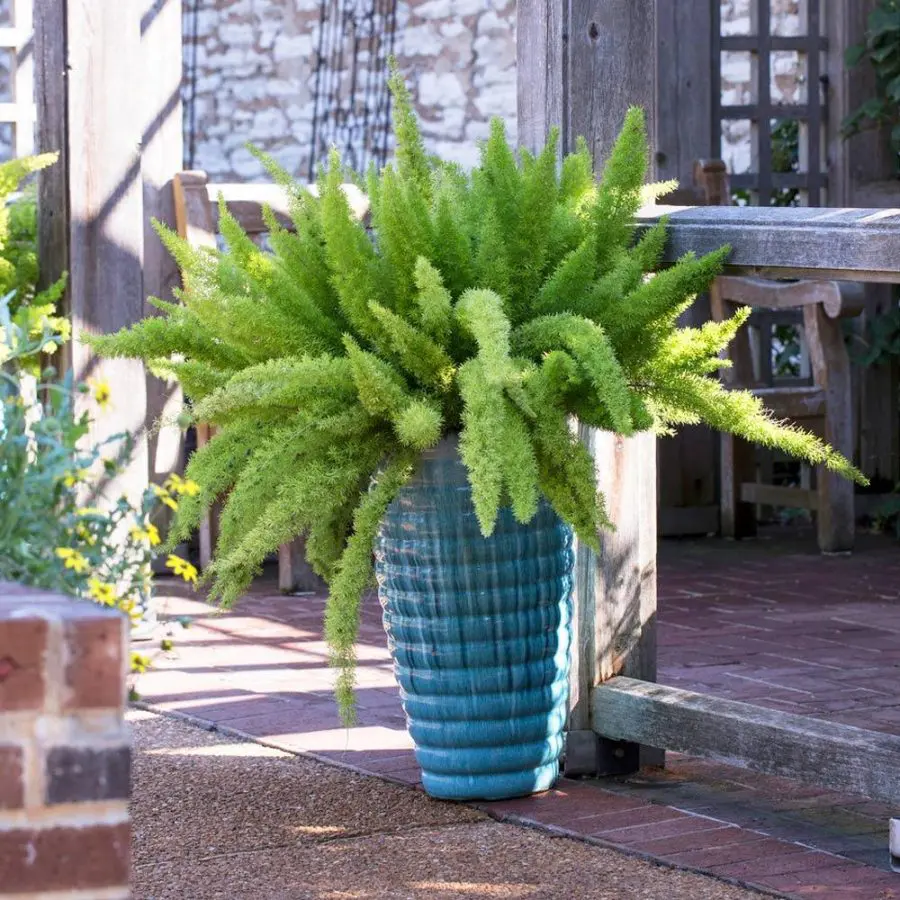This post contains affiliate links. If you buy something from one of our links we may earn a commission. Thanks

Learn the secrets of bonsai tree size control! Find out how do bonsai trees stay small with our friendly guide. Discover pruning, training techniques, and more.
Bonsai Trees stay small by undergoing a specialized pruning and cultivation process. The roots and branches are regularly trimmed, and the tree is often planted in small containers to limit growth. These practices keep the bonsai miniaturized while mimicking the appearance of a fully grown tree.
Bonsai trees have long captivated people with their miniature beauty, but have you ever wondered how do bonsai trees stay small?
It turns out that there are a variety of factors at play, including genetics, pruning, and container selection.
Whether you’re a seasoned bonsai enthusiast or a curious beginner, understanding these size control techniques can help you create and maintain the perfect bonsai tree.
So let’s dive in and explore the fascinating world of bonsai tree size control!
How Do Bonsai Trees Stay Small?
Welcome to my blog post all about the wonderful world of bonsai trees.
If you’re like me, you may have always been fascinated by these tiny, perfectly formed trees.
But have you ever wondered how they stay so small?
In this post, we’ll explore the factors that influence bonsai tree size and how pruning, training, and container selection can help keep them miniature.
So, grab a cup of Joe, and let’s dive in!
Brief history and definition of bonsai trees
Bonsai trees have been around for thousands of years and originated in China before spreading to Japan, where the practice of cultivating miniature trees truly blossomed.
Bonsai trees are created by growing and training small trees in containers, carefully pruning and shaping them to maintain their miniature size and unique aesthetic.
The word “bonsai” itself means “planted in a container” in Japanese.
Understanding how do bonsai trees stay small
Understanding how bonsai trees stay small is essential for anyone interested in growing and maintaining these miniature marvels.
Without proper size control techniques, bonsai trees can quickly outgrow their containers and lose their unique shape and character.
By learning about the factors that influence bonsai tree size, you can create and maintain beautiful, healthy trees that will bring joy and beauty to your home or garden for years to come.
Factors that Influence Bonsai Tree Size
Now that we’ve covered the basics of bonsai trees, let’s dive into the factors that influence their size.
From genetics to nutrition to container size, there are many variables at play that determine how big or small a bonsai tree will ultimately grow.
Understanding these factors is key to successfully cultivating and maintaining bonsai trees that are both healthy and aesthetically pleasing.
So, grab your gardening gloves, and let’s explore the fascinating world of bonsai tree size control!
Genetics of the tree species
The species of tree that you choose for your bonsai can have a significant impact on its ultimate size.
Some species naturally grow more slowly and stay smaller, making them ideal for bonsai cultivation.
Others, like fast-growing trees, may be more difficult to keep small and may require more frequent pruning and training.
Age of the tree
The age of the tree you start with can also affect its size. Generally, older trees have thicker trunks and larger branches, making them harder to keep small.
Starting with a younger tree can give you more control over its growth and make it easier to maintain a miniature size.
Nutrition and water intake
Providing your bonsai tree with the right nutrients and water is essential for keeping it healthy and promoting steady growth.
However, overfeeding or overwatering can cause the tree to grow too quickly, making it difficult to maintain a small size. Finding the right balance is key.
Container size and shape
The size and shape of the container you choose for your bonsai tree can also influence its size.
A larger container may allow the tree to grow larger, while a smaller container can help keep it small.
The shape of the container can also affect the tree’s growth pattern and overall shape.
Pruning and training techniques
Perhaps the most important factor in bonsai tree size control is pruning and training.
By carefully trimming the tree’s branches and roots, you can keep it small and encourage it to grow in the desired shape.
Different pruning and training techniques can be used depending on the species of tree and the desired final form of the bonsai.
The Role of Pruning in Bonsai Tree Size Control
When it comes to controlling the size of your bonsai tree, pruning is one of the most important techniques at your disposal.
Pruning involves carefully trimming back branches and foliage to maintain the desired size and shape of the tree.
While it may seem counterintuitive to cut back parts of the tree, pruning is essential for promoting healthy growth and maintaining a miniature size.
In this section, we’ll explore the different types of pruning techniques used in bonsai cultivation and how they can help you keep your tree small and beautiful.
Different types of pruning and their effects on the size
There are several different types of pruning that can be used in bonsai cultivation, each with its own effect on the tree’s size and growth pattern.
Thinning out branches, for example, can help promote a more open, airy shape, while pinching back new growth can encourage the tree to stay small and compact.
Timing and frequency of pruning for size control
Knowing when and how often to prune your bonsai tree is key to keeping it small and healthy.
The timing and frequency of pruning can vary depending on the species of tree, the time of year, and the desired final form of the bonsai.
Generally, pruning should be done in the spring and fall and should be done selectively and gradually over time to avoid shocking the tree.
How to prune branches and roots for size control
Pruning branches and roots is an art in itself and require careful attention to detail and a steady hand.
When pruning branches, it’s important to make clean cuts at the appropriate angle to avoid damaging the tree.
Root pruning can also be done to keep the tree small and healthy, but should be done sparingly and only when necessary to avoid stressing the tree.
With a little practice and patience, you can master the art of pruning and keep your bonsai tree perfectly small and beautiful.
Techniques for Bonsai Tree Training and Size Control
In addition to pruning, there are a variety of other techniques that can be used to train and control the size of your bonsai tree.
These techniques involve shaping the tree through careful wiring, bending, and tying to create the desired form and keep the tree small and compact.
In this section, we’ll explore some of the most common training techniques used in bonsai cultivation and how they can be used to keep your tree perfectly miniature.
Wiring techniques for shaping and controlling the growth
Wiring is a technique used in bonsai cultivation to shape the tree by wrapping copper wire around the branches and trunk.
The wire is carefully tightened to bend the branches into the desired position and is removed once the tree has set into its new shape.
Wiring can be used to control the size and form of the tree, as well as to promote a more balanced and harmonious overall structure.
Pinching and bud selection for size control
Pinching involves removing the new buds and shoots that appear on the tree to encourage smaller growth and a more compact form.
By carefully selecting which buds to remove, you can direct the growth of the tree and keep it small and beautifully shaped.
Defoliation for size control
Defoliation is a technique used to reduce the size of the tree’s leaves and encourage smaller growth.
By carefully removing the leaves from the tree at certain times of year, you can promote a more miniature form and maintain the overall health and beauty of the tree.
Other training techniques for size control
In addition to wiring, pinching, and defoliation, there are a variety of other training techniques used in bonsai cultivation to control the size and shape of the tree.
These include techniques like tilting, in which the tree is tilted to one side to create a more dynamic form, and jinning, which involves stripping the bark from the tree to create a more weathered and natural appearance.
With these techniques and a little patience and practice, you can keep your bonsai tree perfectly small and beautiful for years to come.
Container Selection and Size for Bonsai Trees
Choosing the right container is an essential part of bonsai cultivation, as it can play a significant role in the size and overall health of your tree.
In this section, we’ll explore the factors that influence container selection and size, as well as the importance of choosing a container that is appropriately sized for your tree.
We’ll also discuss the different types of containers available and the pros and cons of each, so you can make an informed decision when it comes to selecting the perfect pot for your bonsai tree.
Factors to consider when selecting a container
When selecting a container for your bonsai tree, there are several factors to consider, including the style of the tree, the size and shape of the trunk, and the overall health and growth habits of the tree.
It’s also important to consider the materials used to make the container, as well as the drainage and watering needs of the tree.
How container size affects bonsai tree size
The size of the container you choose can have a significant impact on the size and overall health of your bonsai tree.
A container that is too small can limit the tree’s growth and lead to root bound, while a container that is too large can lead to overgrowth and poor health.
It’s essential to choose a container that is appropriately sized for your tree to ensure optimal growth and health.
How to choose the right size container for a bonsai tree
Choosing the right size container for your bonsai tree requires careful consideration of the tree’s size and growth habits, as well as the type of pot and its drainage and watering needs.
As a general rule, the container should be slightly larger than the tree’s root ball and should allow for adequate drainage and airflow.
It’s also important to consider the aesthetics of the container, as it can play a significant role in the overall beauty and harmony of the bonsai tree.
By selecting the right size and style of container, you can ensure the long-term health and beauty of your bonsai tree.
FAQs
Bonsai is a traditional Japanese art form that focuses on growing miniaturized trees in small containers.
The goal is to produce a tree that looks like a mature, fully-grown specimen but on a much smaller scale.
This is achieved through various techniques like pruning, root restriction, and selective feeding.
The allure of bonsai lies in its ability to capture the essence of a full-sized tree while keeping it miniature, prompting several questions about its size and growth.
Q: How do bonsai trunks stay small?
A: The trunks stay small due to regular pruning and the restriction of the root system in small pots, which limits nutrient uptake.
Q: Are Bonsai trees supposed to be small?
A: Yes, the essence of bonsai is to create a miniaturized yet realistic representation of a tree.
Q: Why do Bonsai trees stop growing?
A: They don’t entirely stop growing but grow at a much slower rate due to regular pruning and restricted root growth.
Q: Does bonsai grow small, or do you force it to be small?
A: Bonsai trees are made small through human techniques like pruning, root confinement, and selective feeding.
Q: What influences the small size of a bonsai?
A: The size of the pot, regular pruning, and controlled feeding are the main factors that limit a bonsai’s growth.
Q: Can a bonsai grow to full size?
A: If transplanted into the ground and left to grow without pruning, a bonsai has the potential to grow into a full-sized tree.
How Do Bonsai Trees Stay Small? Final Thoughts
Congratulations, you’ve made it to the end of our guide on how do bonsai trees stay small!
By now, you should have a better understanding of the various factors that influence bonsai tree size, as well as the techniques and tools you can use to control and shape the growth of your tree.
Whether you’re a seasoned bonsai enthusiast or just starting, we hope this guide has been helpful in your journey to cultivate healthy and beautiful bonsai trees.
Remember, with patience, care, and a little bit of creativity, you can create stunning works of art that will bring joy and beauty to your home or garden for years to come.
Summary of the key factors that influence bonsai tree size
To recap, the size of a bonsai tree is influenced by several factors, including genetics, age, nutrition, and water intake, container size and shape, and pruning and training techniques.
By understanding these factors and how they interact with each other, you can control and shape the growth of your bonsai tree to create a beautiful and healthy specimen.
How Do Bonsai Trees Stay Small? Final Thoughts
In bonsai tree cultivation, size control is crucial for creating a beautiful and harmonious tree that reflects the natural beauty of its species.
By using pruning, training, and container selection techniques, you can control the size and shape of your tree, while promoting healthy growth and vitality.
Remember, bonsai cultivation is a journey that requires patience, dedication, and a willingness to learn and experiment.
With the right techniques and care, you can create stunning works of art that will bring joy and beauty to your life for years to come.
Read more: 10 Essential Tips for Thriving Indoor Bonsai Trees










